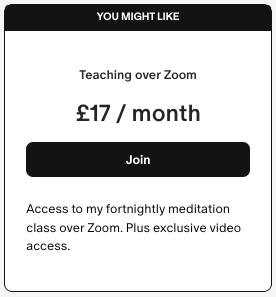The Mindfulness of Breathing
Below is an excerpt from my forthcoming book… © Mahabodhi Burton 4 minute read This excerpt is from the chapter ‘Buddhist Practice’ and it explores the mindfulness of breathing meditation practice, as taught within Triratna. It follows on from ‘Meditation Posture,’ which investigated key aspects around stimulation and relaxation. 2) The Mindfulness of Breathing Or they might practise the Mindfulness of Breathing meditation, in order to develop the quality of mindfulness itself, so that that quality can then be directed more generally into their lives, and specifically to the four foundations of mindfulness, thus developing those qualities necessary for Nirvana.[1] After instructing the monk to take up his posture, the Satipatthana Sutta gives the monk instructions on practicing the Mindfulness of Breathing. The text only says that the monk should be aware of whether his breath is long or short,[2] after which it seems to give a description of the Body Scan.[3] This instruction can and has been interpreted in different ways. The most obvious interpretation is that the monk isn’t aware only of the length of their breath, whether it is long or short, but tries as best they can to know as continuously as possible the exact details of their breathing, including tangible sensations as experienced and the movements of their shoulders and abdomen. The principle here is that if we want to develop mindfulness, we need something concrete and tangible to be aware of. The breath has an advantage over other ‘neutral’ objects we could use—such as observing the flickerings of a candle flame—in that it is intimately connected with the body and thus the emotions, whose tenor is are reflected in the quality of the breath. Across the globe, Buddhists in different traditions practise the Mindfulness of Breathing in slightly different ways. As with any spiritual practice it is important to have one specific method to follow, so that a sense of familiarity is built up and the practice does not need to be thought about and can instead be settled into.[4] However, it is also important to understand the principles behind each practice, and work from there. In Theravada Buddhism The Mindfulness of Breathing as practised in the Theravada tradition consists of watching the rising and falling of one’s abdomen; on Theravada retreats practice consists largely of alternating this practice with very slow walking meditation, in which the meditator mentally notes the exact movements of their body in each moment (for instance, when taking a step, saying to oneself; ‘lifting, moving, treading’ as each step is taken). In Triratna Buddhism In the Mindfulness of Breathing as practised in Triratna Buddhism, the...
Meditation posture
Below is an excerpt from my forthcoming book… © Mahabodhi Burton 6 minute read This excerpt is from the chapter ‘Buddhist Practice’ and it explores key principles around meditation posture and the ‘body scan.’ It follows on from ‘Contacting the Tangible,’ which led through a physical warm-up followed by a grounding meditation. Meditation posture: the bigger picture People normally think of meditation posture as being the best position that the body can adopt for meditation, for example sitting cross-legged or kneeling astride a cushion, but we can see meditation posture more broadly than this, as being whatever we might do with our body—inside and outside of seated meditation—that supports our mind to be calm, awake and productive of happiness. In other words, anything that supports us practising the four foundations of mindfulness. Regular trips to the gym, having a relaxing Epsom salt bath, the Wim Hof Method, practising Yoga, Tai-Chi, Martial Arts or body-related therapies such as the Alexander Technique all count towards meditation posture in this sense, to the extent they develop vitality and relaxation in our body that is supportive to our meditation practice and our life in general. Perhaps I am risking the wrath of Do-in and Chi-kung teachers here, but I believe the central point in following the exact form of such exercises is less important than our being sensitive to the state of the body being created; our body needs to feel better in our experience. The Buddhist tradition warns meditators against consuming too much or too little food, or having had too much or too little sleep, before meditation for similar reasons. We need to make our own call, in relation to what really works for us from the body’s perspective. Meditation teachers often teach posture extensively before leading people in their first meditations, but I deliberately don’t, as I am wary of encouraging people to think of meditation posture as something to impose on their body, rather than being where one aligns oneself with one’s body’s needs. By leading the Grounding meditation before I teach them more detailed posture, I emphasize the paramount principle that what comes first is listening to what the body needs, and only then choosing a particular way of sitting. More on sitting posture Once meditators understand this, I show them the more comfortable ways that they can sit in meditation. Sitting on cushions, or a chair, is generally better than lying on the floor, as we are less likely to fall asleep; having said this, if we have a bad back or injury, we need to take this into account. We...
Contacting the tangible
Below is an excerpt from my forthcoming book… © Mahabodhi Burton 11 minute read This excerpt is from the chapter ‘Buddhist Practice’ and it explores a physical warm-up for meditation followed by a grounding meditation. Link to led meditation on video. Grounding meditation When a Zen monk dressed in black robes walks slowly down a gravel path, he is practising walking meditation. He feels the contour of the rock pressing though his sandals; the sensations of his robes fluttering about him in the breeze, deliberately sensing everything tangible in his experience. Moving slowly helps him limit the amount of information coming in, thus he can pay close attention to the details of his experience, sink deeply into what he is experiencing and come into an intimate relationship with the world around him.[1] Grounded in our present moment experience in this way, life tends to be pleasurable; of course, the monk spends long hours sitting in zazen[2] without moving, which requires great discipline. In most secular mindfulness eight-week courses,[3] body awareness is central. The idea of mindfulness is introduced as coming into more intimate contact with our experience; in week one people practise the ‘raisin exercise’, spending five minutes or so investigating every aspect of the experience of a raisin; putting it into their mouth, sensing its texture; its smell; its taste; savouring how it feels in their mouth, and so on. The theory is that our western lives are so driven, we are so obsessed with ‘doing’, that much of the time we run on ‘automatic pilot’, ceasing to notice just what we are experiencing, and missing a large part of our lives. We might imagine that we are getting things done and this may sometimes be the case, but certainly on automatic pilot we abandon a level of colour and richness to our lives. The eight-week course encourages us to wake up from automatic pilot and purposefully bringing awareness to our present moment experience, while holding back from making judgements about it, thus experiencing the ‘being’ mode, where our life is grounded in lived experience. In this way mindfulness gets our mind back on our side. In this way Buddhist and secular mindfulness practice begin with an attempt to ground ourselves in our experience; that is, in the experience of sensation. A feeling of grounded-ness is the effect of being in touch with the tangible, leading to an increasing feeling of confidence. Meditation is the most efficient way of working on the four foundations. In meditation we cease doing our normal activities, retiring to a quiet place where we won’t be disturbed, in order to look carefully into our...
Intention, Motivation, Acceptance, Reinforcement
Below is an excerpt from my forthcoming book… © Mahabodhi Burton 6 minute read This excerpt is from the chapter ‘The Undiscovered Foundations’ and it explores further ways in which the Four Foundations of Mindfulness condition each other: such as through the processes of intention, motivation, acceptance and reinforcement. It also explores how the Foundations combine: for instance as sources of tension, relaxation, and so on. This excerpt follows on directly from Mindfulness and Conditionality: views. ix Secondary conditional relations These twelve ‘processes’ illustrate the primary processes in play between the four foundations. For completion, it is important also to extend the Conditionality model to include all the ‘secondary’ processes that exist between the foundations and the primary processes associated with them. Here are some examples; INTENTION Intention is the process by which emotion is conditioned by the presence of views. Views—–Intention—–>Emotion Our emotion—in the sense of our wanting—can be quite vague; we vaguely want to amass pleasurable experiences and to avoid painful ones. The clearer our view is about what will bring us happiness, the more we can form an intention. For instance, we might be clear that it will be beneficial to us to meditate at 7am every morning and might set an intention to do just that. This intention will condition our emotion to do so. However, although on the surface we might think we have set a clear intention, other views lurk beneath the surface, such as the unarticulated view that ‘comfort is the way forward.’ This view sets up a countervailing intention that leads us to want to stay in bed. If that intention is the stronger, then we stay in bed. Intention that leads to happiness An Enlightened person who holds Right View[1] possesses Skilful Intention because their views always lead to emotions which bring about happiness, for instance loving kindness. However, short of Enlightenment a person will exhibit unskilful emotions, which is evidence that they do not possess Right View and that their intentions consequently are not always skilful. Such people need to make a conscious effort to make skilful intentions and stick to them, if the world is to be as happy a place as it might be, and they do so by examining their views, conscious and unconscious. Intention that leads to suffering Obviously, an intention that leads to suffering is one that arises from a wrong view about what pursuits will lead to happiness. Although we might make an intention to do something skilful, like quit smoking or meditate regularly, we often fail, due to our subconscious intentions to do something...
Mindfulness and Conditionality: views
Below is an excerpt from my forthcoming book… © Mahabodhi Burton 6 minute read This excerpt is from the chapter ‘The Undiscovered Foundations’ and it explores the way in which views condition the other Foundations of Mindfulness. This excerpt follows on directly from Mindfulness and Conditionality: mind. viii Mindfulness of views conditioning happiness / Awakening Views When we are trying to transform our views to be sources of happiness, we need to bear in mind that when the condition of views is in place—as it always is, it affects body, feeling and mental states, contributing towards Awakening or suffering in the future, through the processes of perspective, mood and thought. The Satipatthana Sutta teaches the monk to develop mindfulness of his views with regard to: The five hindrances By becoming clear about which mental states lead directly to suffering, or hinder it being overcome, and are therefore unconducive to Awakening, he is motivated to root them out. The fluid nature of his person By becoming clear that his personality is fluid, being made up of five impermanent qualities, called heaps (skandhas)—namely form, feeling, apperception, volition and consciousness, he is motivated to let go of all notions of an unchanging self. Fetters that arise to spiritual development in relation to sense experience By becoming clear that the source of happiness for himself and others does not lie in sense experience (including mental imaginings) but rather in cultivating skilful mental states in meditation, leading to pleasant spiritual feeling. The seven factors of Awakening By becoming clear about the spiritual qualities that do lead to Awakening–namely mindfulness, investigation of phenomena, ethical robustness, joy, tranquility, meditative concentration and equanimity. The four Noble Truths By becoming clear (developing insight into) how suffering is overcome, he realizes the four Noble Truths. In practising mindfulness of views, the monk ensures that the views he holds about everything pertinent are in line with reality and conducive to wisdom, to Awakening, to Nirvana. The above categories form a kind of ‘inverse hierarchy’ in terms of views. Before he can do anything, the monk needs to be clear he is in a mental state which is going to hinder his progress before he even starts. Secondly, he needs to understand that he can change. Thirdly, he needs to know to look for that change not in the ’outer world’ of the senses but in the ‘inner world’ of skilful mental states. Fourth, he needs to clarify which positive qualities he needs to develop if he is to attain Awakening. And finally, he needs to underpin his practice with wisdom, by understanding the nature of reality (in...






 Users Today : 217
Users Today : 217 Users Yesterday : 110
Users Yesterday : 110 This Month : 857
This Month : 857 Total Users : 16014
Total Users : 16014
